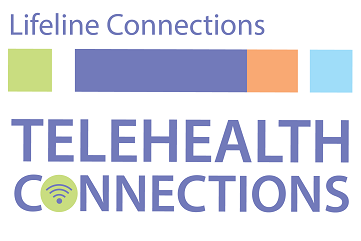
6 Tips for Telehealth
With the continuation of COVID-19 physical distancing requirements, Lifeline Connections has transitioned all outpatient services to telehealth. This includes assessments, therapy, group sessions and outpatient and problem gambling treatment.
What is telehealth?
Telehealth is healthcare provided using technology such as phones, secure video conferencing software (Zoom, FaceTime, etc.) and text. This makes seeking treatment for substance use or mental health disorders even easier with the new flexibility. If a patient’s assessment comes back recommending a residential level of care, these programs are still operating under COVID-19 safety guidelines.
Tips to getting the most out of your telehealth appointment
- Have a fully charged battery for your phone or computer, with a charging cord standing by in case it is needed in the middle of your appointment.
- Choose a quiet, private place where other people cannot hear or see you.
- Find a comfortable place to sit for your appointment where you can also focus.
- Make sure the space you use is free of distractions, like a TV or radio that is on.
- Get a glass of water so you don’t have to step away during your appointment.
- Log into the appointment five minutes before it begins so you aren’t late in case you encounter a challenge or delay.
How can I get started with Lifeline Connections?
- You can email, use live chat or call (800) 604-0025 to schedule an assessment.
- This tells us how we can best meet your needs. Our caring team of substance use and mental health counselors will determine what level of care you need and help get your life back on track.
Step 2: Complete your assessment
- This meeting will allow you to work directly with a doctor and design a plan just for you.
- Everyone’s road to recovery is different.
Step 3: Follow through with your recommended level of care
- Your plan may include any of the following:
It’s important to stay healthy and take precautions for your health.
If stress begins to impact your daily life and taking breaks or connecting with loved ones doesn’t help, reach out get support. There are mental health professionals here to work with you every step of the way and online support groups. Learn more about our mental health programs.
Source: HealthIT.gov
